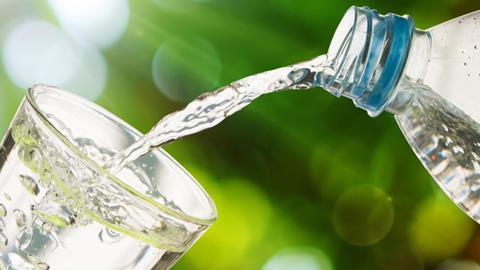Carrying a reusable water bottle – à la Chilly’s – has become something of a status symbol. Visit any UK office and you’ll spot them on desks in an array of patterns, colours and sizes. Staying hydrated while protecting the planet is ‘cool’, as signalled by Chilly’s’ Glastonbury Festival sponsorship this month.
Despite this quiet revolution, single-use plastic water bottle brands are still cashing in. Brits spent £1.6bn on branded and supermarket own-label bottled water in 2021, equivalent to 10 million bottles per day, according to a new Retail Economics report.
The report, commissioned by campaigners including the groups Refill and Whale & Dolphin Conservation, as well as the filter business Brita, has made a case for the government to impose advertising restrictions on bottled water brands, and to introduce a 10p tax for shrink-wrapped water bottle packs. But will changes like these sink bottled water sales?
To understand why Brits buy bottled water, you only need to look at how the category fared during the pandemic.
After coronavirus sparked the UK’s first lockdown in March 2020, sales of single-serve formats fell dramatically, leading to the category’s top three names – Volvic, Evian and Highland Spring – losing a combined £78.8m [NIQ 52 w/e 30 January 2021].
Bottled water relies on impulse
And despite a host of supply chain issues blighting the category in 2022, volumes rebounded by 2.4% as out-of-home occasions returned, while value rose by a fifth to £1.24bn [NIQ 52 w/e 10 September 2022].
Put simply: bottled water is reliant on impulse, which is why the main players haemorrhaged so much money when shoppers were stuck at home. For this reason, a ban on advertising is unlikely to have any meaningful impact on sales of single-serve formats, purchases of which aren’t usually planned.
To invoke meaningful change, government resources would instead be more effectively directed towards communicating the benefits of reusable bottles and installing accessible water fountains in every locality.
This is backed up by the findings of a recent poll of 4,175 Brits, commissioned by Ocean Bottle, in response to which 64% said they would be more likely to carry a reusable bottle with them if there were more refill stations and water fountains in public places [Yonder, January].
A tax on shrink-wrapped plastic
For bulkier take-home purchases, a 10p tax on shrink-wrapped multipacks might encourage manufacturers to ditch them, or for shoppers to switch to brands that use less packaging. However, such a step change would account for only a small proportion of overall plastic waste in the category.
To reduce plastic waste linked to impulse sales, Retail Economics’ report suggested the government remove bottled water from prominent positioning in shops, as it has done with HFSS foods. However, as Evian and Volvic owner Danone UK & Ireland points out, “restrictions on advertising for the category would risk inadvertently driving consumers towards less healthy beverage options”.
Plus, merchandising restrictions would not solve the conundrum of meal deal offers, where bottled water tends to be the healthiest drink option available – and shoppers are incentivised to get a good ‘deal’ on it.
So perhaps retailers should instead look to list water brands exploring more sustainable packaging options, such as Cano Water, which uses resealable 500ml aluminium cans; One Water and Re:Water, which offer 500ml aluminium bottles; or Bottle Up, whose water is packaged in 500ml reusable bottles made from sugar cane. Alternatively, the government could impose a tax on all water brands that use plastic packaging, encouraging shoppers to switch to sustainable ones. But a tax isn’t the solution to all problems.
A permanent shift away from traditional bottled water brands won’t happen overnight; it will require continued investment into infrastructure and education from the government, and research and development into innovative and affordable packaging solutions from brands. But with a £1.6bn industry at stake, let’s hope they don’t bottle it.




















No comments yet